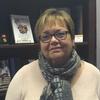
-
I believe that most of us have been challenged by the senseless deaths of those that have been victims of hate crimes and discrimination. We have been reminded of the bias’ that so many of us have, whether we know it or not. Most of my friends and family members have on their reading list a book about racial discrimination and inclusion. Is this just a fad or are we making significant changes to our communities to put into practice what we have read?
For some of us we may extend care to the person on the side of the road, but are we able to make sustainable changes within our organization to really welcome the person into our midst that is significantly different than we are?
Are you as challenged as I am when you read the passage in Matthew that speaks to caring for the stranger in our midst? Do you find yourself viewing the homeless person on the street in need of food, clothing, shelter, as the stranger that you passed by and did not welcome?
"For I was hungry, and you gave me no food, I was thirsty, and you gave me no drink, I was a stranger and you did not welcome me, naked and you did not clothe me, sick and in prison and you did not visit me.’ Then they also will answer, saying, ‘Lord, when did we see you hungry or thirsty or a stranger or naked or sick or in prison, and did not minister to you?’ Then he will answer them, saying, ‘Truly, I say to you, as you did not do it to one of the least of these, you did not do it to me.’ " Matthew 25: 42-45
I love the precious image of a young Caucasian toddler jumping up and down when she sees the UPS truck drive up to the house thinking it was her daddy coming home from work. Dejected, she pouts and answers to her mom that it isn’t her daddy, as her daddy is bald, and this UPS driver had a full head of hair. She did not notice the colour of his skin (black), rather, only the amount of hair on his head. If only we could all be so colour-blind!
Similarly, millennials who make up 75% of the workforce want a workplace that demonstrates diversity and inclusion.
However, with most leaders of organizations still being boomers and GenX there is still a significant gap in what we desire to be the norm and reality. Our hope is that these 12 characteristics of an inclusive and discrimination-free community will contribute to the conversation and challenge the reader.
1. It has created space for a visibly diverse team. Leadership will speak often to the issue of discrimination and they role model, demonstrate, and celebrate this by ensuring their teams are visibly diverse.
2. It creates space and the value and importance of distinct linguistic and cultural backgrounds for meeting the spiritual, social, and cultural needs of their people and believes that the community should do everything possible to make people of all cultural and linguistic backgrounds welcome.
3. It creates and maintains a learning culture. Leadership has invested in professional development of the Board, staff, and volunteers on the prevalence of discrimination, and steps to prevent and respond to acts of discrimination.
4. It lives its mission and core values. The vision, mission, values all support this commitment to celebrating diversity and equality.
5. It has well crafted policies and procedures stating that there will be no tolerance for bullying, harassment, or discrimination. A whistleblower policy has been established so people within the community can raise their concerns about discrimination with a safe person that will take their concerns seriously.
6. It understands the full meaning of discrimination. Discrimination is defined and communicated across the organization. The definition has not been modified to accommodate for discrimination of some people groups.
7. It is well informed and strives to mitigate risk to the well-being of the organization. More controversial topics of discrimination have been discussed at the Board level, and leadership have consulted with legal counsel as to how to manage these areas within hiring practices including creed, gender equality, and gender identity.
8. It is transparent. Leadership operates under transparent policies and positions meaning there are no hidden rules of behaviour that may be apparent to some groups and unknown to others.
9. It swiftly deals with individuals that do not embrace the commitment and values of the organization. Progressive steps of discipline have been established to deal with breaches of policy and discrimination.
10. It is a caring, respectful community. The organization believes that being intentional regarding diversity expresses a genuine care and respect for all.
11. It accepts and embraces change. Change is inevitable. A discrimination-free community is willing to learn and grow, recognizing that current and past experiences and practices must be constantly reviewed and updated to meet the needs of the community in which we serve.
12. It has a comprehensive and easily accessible system when conflict arises, to ensure conflict resolution is swift. It recognizes that conflict is inevitable in a complex multicultural organization, and it has procedures in place to address conflict in a non-confrontational manner that respects the dignity and confidentiality of all parties.
This is a conversation that we can’t let die. We must keep the conversation happening. I am sticking my neck out by even writing a blog on the topic, as I too have been accused of bias and discrimination. I have been overlooked for roles, responsibilities for being a woman. My children have been told they are not as intelligent as their Asian peers. I have been rejected while living in Europe for not being able to speak German or have been mistreated because someone viewed me as being an American and they quickly apologized when they learn I am a Canadian. However, I also know that I live with an abundance of privilege, as a Caucasian. I do not live daily with the same fears that so many of my friends of colour live with.
This list is as much for me as it is for you, my reader.
Lord, please keep us humble.




Leave a Comment